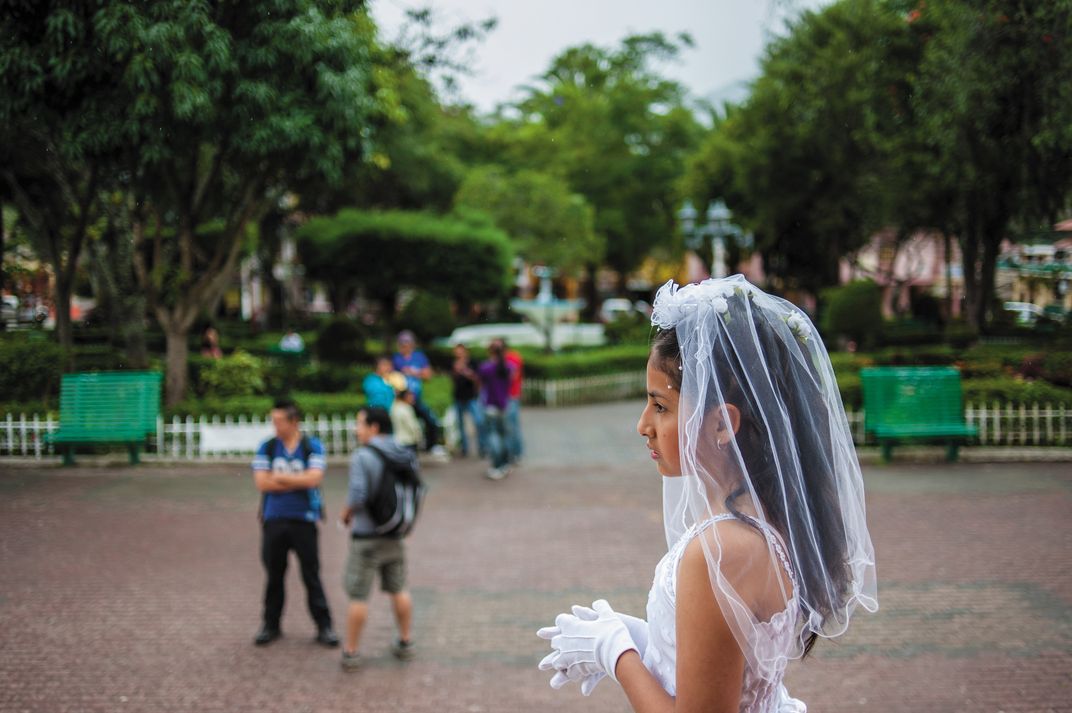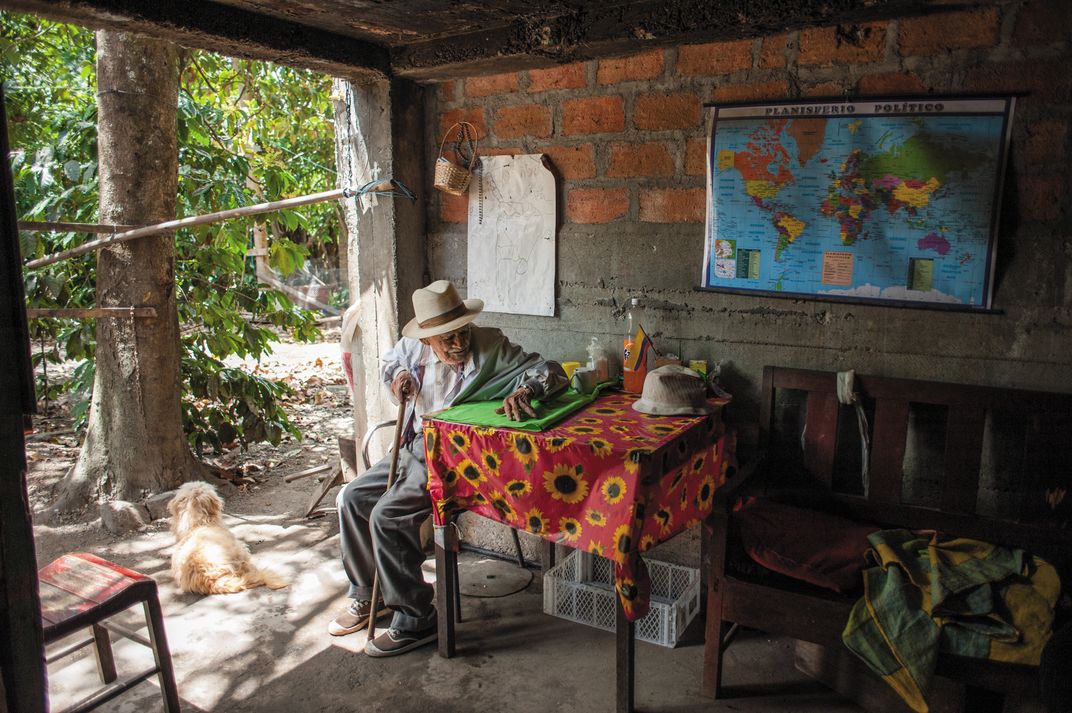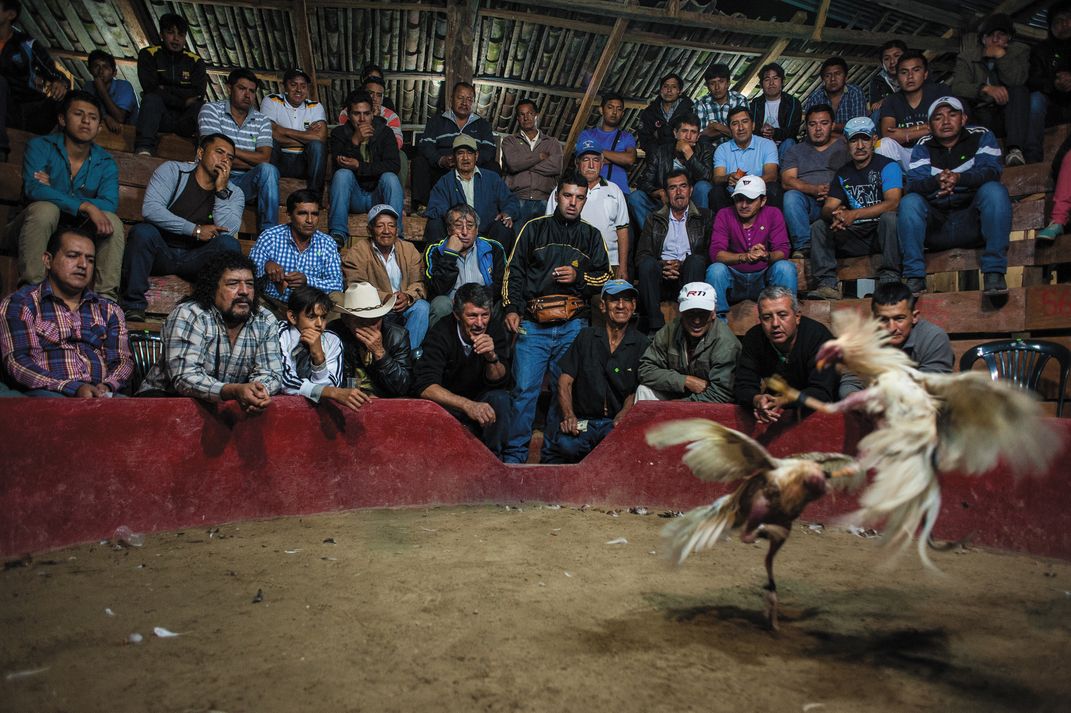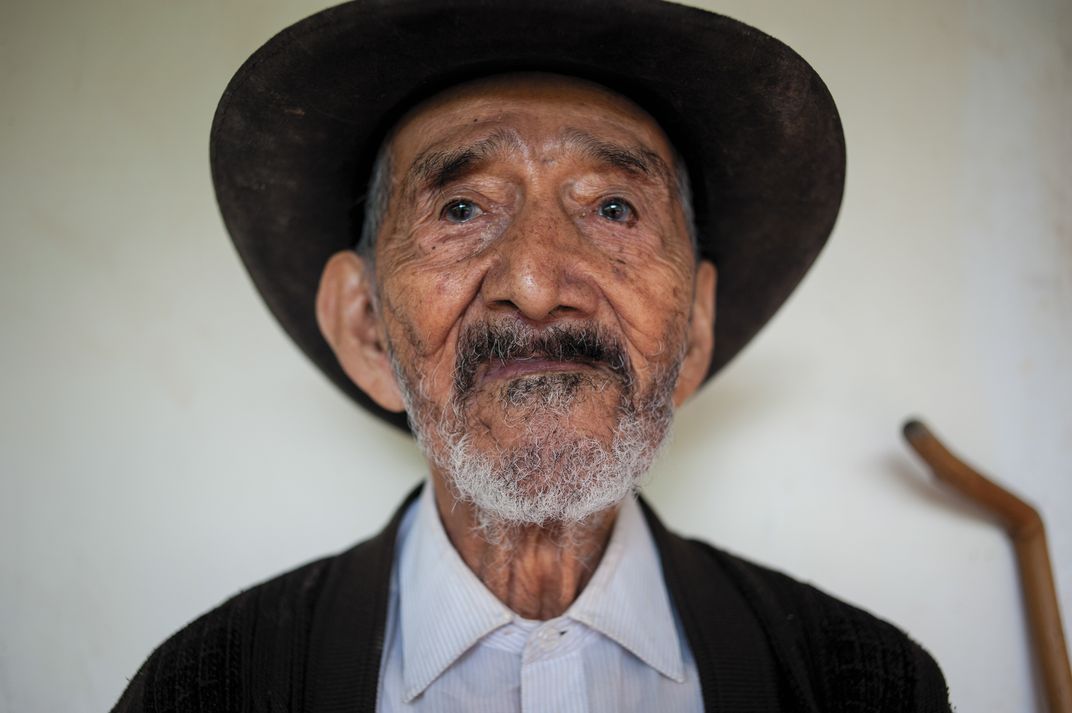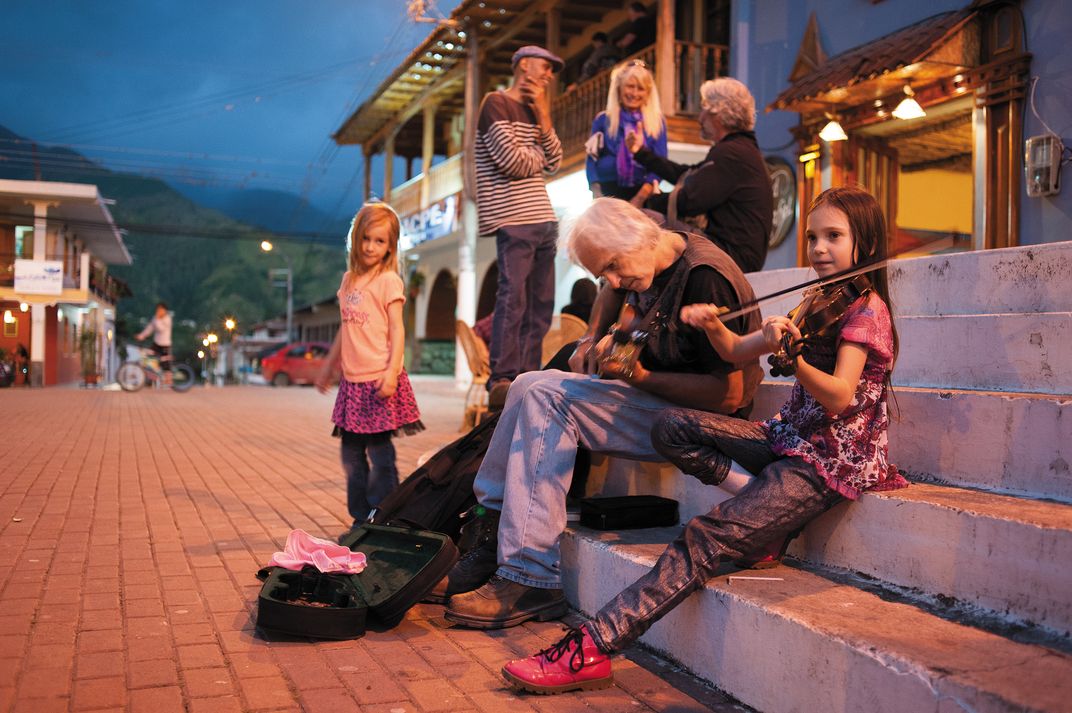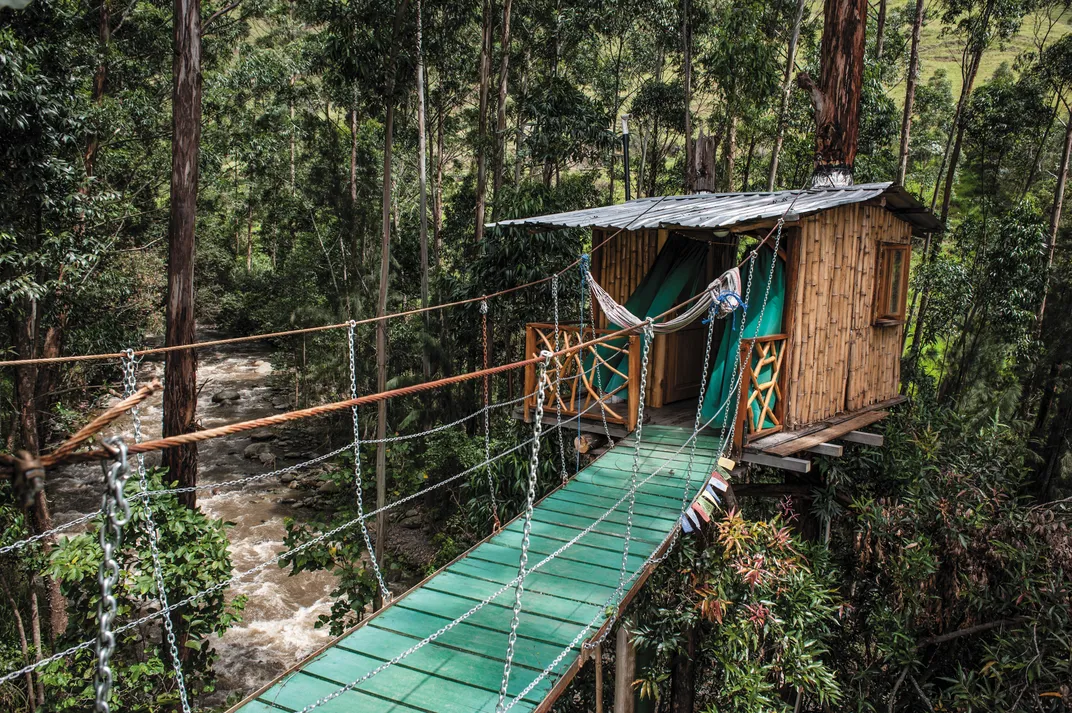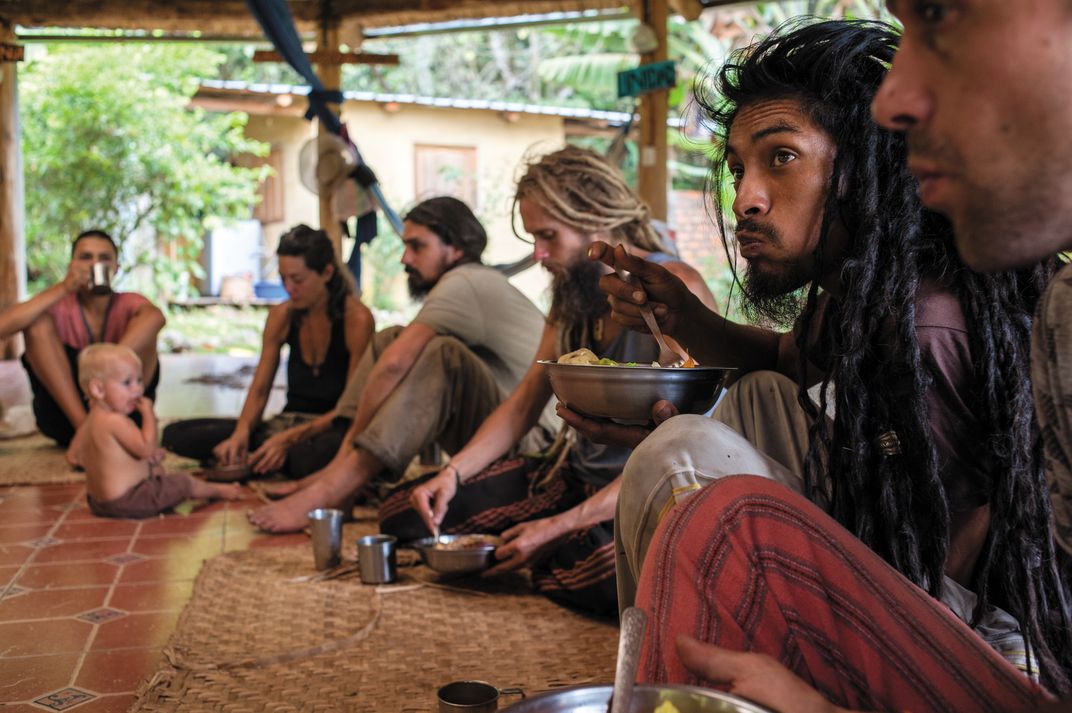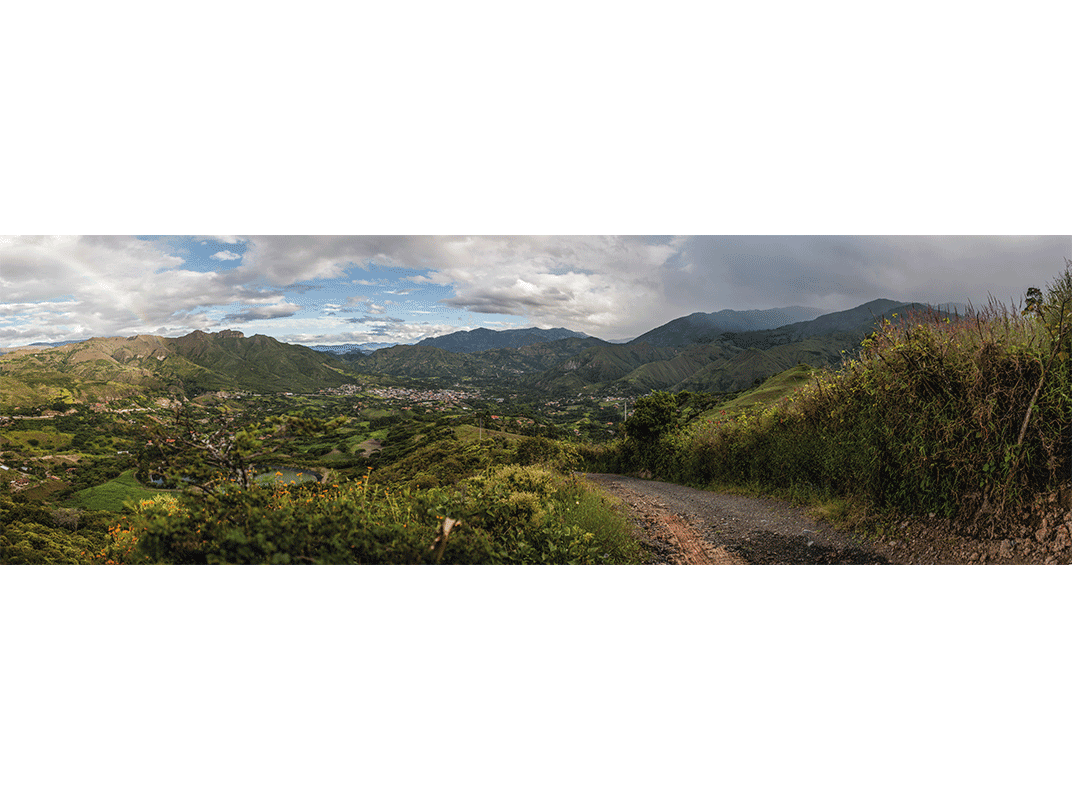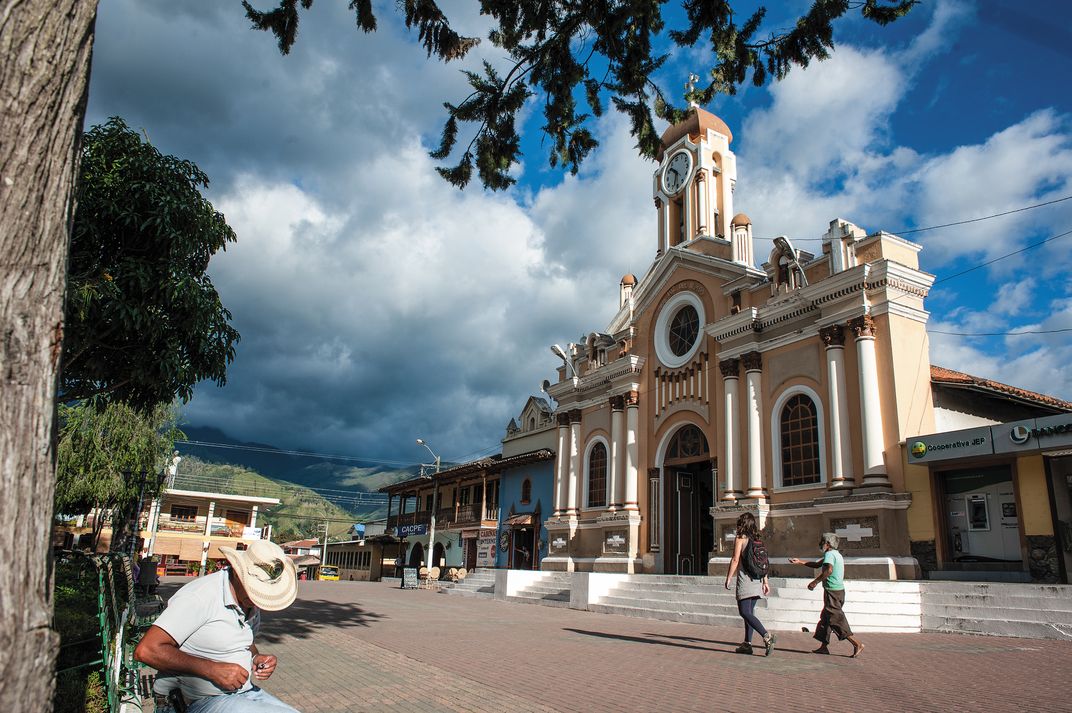Hailed as a Modern-Day Shangri-La, Can This Ecuadorian Town Survive Its Reputation?
Vilcabamba is an idyllic little town—and that’s its problem
Noé Armijos is sitting on a bench in the plaza, legs crossed. An unusual cane of uña de gato (cat’s claw) wood—a local cure for aching bones—is propped up next to him.
Don Noé is a 95-year-old native of Vilcabamba, a dreamy little town in the mountains of southern Ecuador that has long been reputed to be home to many men and women as old as as he is—and older even. This distinction, coupled with a beautiful natural setting of fruit orchards, pines and tropical trees, has attracted tourists as well as American and European expatriates to Vilcabamba for four decades. Some 13,000 foreigners came here last year. Don Noé doesn’t like that one bit.
“We get both kinds of gringos: the kind that have so much money but won’t spend any of it here, and the others who are so broke, they pick up the pennies that fall out of their pockets,” says Don Noé, taking a quick look around the plaza. To his right, a young, long-haired American wearing flip-flops walks by, gazing at the leafy surroundings.
Back in the 1960s, this was a sleepy and remote village with dirt streets, crumbling adobe buildings and little connection to the outside world. The only people coming through town were on their way to the border crossing with Peru. Locals bathed daily in the Yambala River, living off the land, growing coffee, cocoa, corn, sugarcane and fruit trees year-round. “All you have to do is throw the seeds on the ground, and they will grow!” is a common saying around town.
Yet despite such fertile soils, Vilcabamba’s lush hills and valleys aren’t producing for the agricultural market like they once did, as most locals prefer to work in tourism instead of farming and land is being used for housebuilding. This reversal started in 1973, when a Harvard Medical School physician and researcher named Alexander Leaf, published an article in National Geographic magazine. In the article, Leaf presented his findings on what he referred to as the “most consistently disease-free and long-lived people on Earth:” the Abkhazians on the north shore of the Black Sea, the Hunzukut people in the Himalaya of Pakistan and the residents of Vilcabamba. But as more and more researchers began to descend on Vilcabamba, Leaf himself became suspicious. He invited Richard Mazess of the University of Wisconsin, Madison and Sylvia Forman of the University of California, Berkeley to help decipher the real ages of Vilcabamba’s elderly population. In “Longevity and age exaggeration in Vilcabamba, Ecuador,” published in the Journal of Gerontology, the two researchers concluded that “life expectancy (corrected for exaggeration) at all ages in Vilcabamba (and Loja) is in fact less than in the U.S.”
Despite the debunking, Vilcabamba continued to be depicted as the “Valley of Longevity” and a modern-day Shangri-La, drawing yet more researchers and visitors seeking that ever so ephemeral secret to eternal youth. Stories of men living as long as 140 years began to make the rounds, alongside theories about the healthful impacts of mineral-rich local water, every manner of vegetable and perennial springlike weather.
Bernie Uhe doesn’t dismiss the theories; after all, he’s lived happily and healthily in Vilcabamba for 15 years. A meditation teacher and building contractor from Southern California, Uhe is nonetheless frankly critical about many of Vilcabamba’s newcomers: “This town attracts lots of eccentric conspiracy theorists, New Ageists and people who don’t like the quality of life in the United States.” The three groups don’t always get along, he explains. “After their honeymoon with Vilcabamba ends and reality sets in, foreigners must integrate with the local culture,” Uhe says, switching from English to accented Spanish. “This doesn’t happen enough.”
Uhe is taking me in his pickup truck around Hacienda San Joaquín, an upscale gated community catering to well-to-do foreigners. He’s built many of the houses here. We drive past perfectly manicured lawns and extensive backyards with horses, llamas and guard dogs. The buzz of lawn mowers and leaf blowers can be heard all around—once a rare noise in these parts.
At the end of a main road, we reach an enormous three-story house at the top of a hill; it’s selling for over $1.5 million. With its grand atrium, all-glass walls and incredible views of the valley, this mansion is representative of some of the lavish lifestyles that can be created here for a fraction of their cost in the United States. The house is also a reminder of how much the town has changed, to the point that it is almost unrecognizable to the locals.
It’s a transformation that’s not likely to slow down anytime soon. “I don’t think the housing market for expats is going to burst,” Uhe says. “Not as long as there are people who keep getting tired of the U.S.”
For those coming from the U.S. or Europe, Vilcabamba grants a respite from a fast-paced, consumerist life, while still offering the creature comforts of cheese, baguettes and wine. With foreigners representing a quarter of the population, the town retains its Ecuadorian character. The nearest city, picturesque Loja, with a population of roughly 200,000, is an hour away. And with the exception of Hacienda San Joaquín, land is still cheap.
Initially, foreigners moved to Yamburara Alto, a neighborhood overlooking the town along narrow dirt roads. These days they are spreading out to San José, where Victor Macas—a lifelong resident—lives with his family.
His house, an orange two-level, concrete-block home surrounded by fruit trees and coffee plants, is also where he runs a small-scale coffee-roasting operation.
“My situation changed completely when an American offered to buy up my land,” says the 79-year-old Macas. He won’t reveal the sale price, but boasts that he was paid at least four times what he would have received from a local buyer.
With that money, Macas was able to jump-start his coffee business. Sitting out on his porch, with birds chirping loudly in the fruit trees of his garden, he admits to disappointment over the changes in Vilcabamba. Dangling a little plastic bag of pills in his left hand, he complains about the prescriptions he now takes: “Back in the day, we would never go see a doctor. We just used herbal medicines, bathed in the river and worked hard all day in the field, drinking the coffee and eating the food we produced ourselves.”
Such changes, Macas argues, are why few centenarians are left in Vilcabamba. “But go see Don Timoteo Arboleda,” Macas says as I leave his porch. “He’s one of our oldest, and he’s still out there harvesting coffee.”
Don Timoteo is napping when I show up at his house at the end of a dirt road in Yamburara Alto, on a hill overlooking the river. He emerges from his room after 15 minutes, wearing a fedora and a baby-blue cardigan sweater. At 101 years of age, he moves slowly and carefully. He hasn’t been able to pick his coffee lately, but he’s still perfectly lucid.
“I’m from the days when Vilcabamba was all agricultural land, but we peasants had no rights to it. Back then, if you wanted to grow, you had to lease your patch from the big landowners.”
In a single lifetime, Don Timoteo has witnessed his neighborhood going from being one big hacienda to small-plot farming to where it is now: an area with less and less land and more and more houses. His eldest daughter, Lastenia, is even more nostalgic than he is; she resents this much growth, this fast. She and her family have received multiple offers for their patch of land by the river, but they won’t budge. “We may not have to lease our land from the big landowners anymore. But we can’t afford to buy anything around town,” she says.
Food and housing prices in Vilcabamba can be among the highest in Ecuador, as high as those in big cities like Guayaquil and Quito. But just a short drive away from the Arboledas’ home, inside a commune called Shambhalabamba, the residents say an idyllic life is possible with little or no money.
There are few rules in Shambhalabamba. No one pays rent. People can build their own houses on the lush 14-acre property by the river as long as they all get along.
The settlement is the lifelong dream of 57-year-old Tom Osher, also known as Mofwoofoo Woofuafa, a gentle, blue-eyed man, self-described on Twitter as a “dimensionless center of perception and love in action.” Osher says he made a fortune running a moving company in San Francisco in the eighties and nineties, before retiring to Vilcabamba to create a model “ecovillage.”
“I pay for everything here, except for the food,” explains Osher. “All I ask is that people donate four hours a day to agriculture and to building.”
Shambhalabamba has already erected at least a dozen homes, a circus stage, a recording studio, an artificial lake, a carpentry workshop and plots to grow vegetables, fruit trees and herbs. In the works are plans for a kids’ circus, where Osher hopes to see more intermingling between commune residents and the families in town.
But Osher’s “anarchism in action” model hasn’t been attracting the locals, no matter how hard he tries. Speaking in rudimentary Spanish, Osher says he plans to leaflet Vilcabamba to get out the word about the commune’s activities.
Back in the plaza, Noé Armijos is sitting on his bench as usual, soaking up the sun. I ask him whether he’s heard of Shambhalabamba. “No, what’s that?” he grumpily replies. I tell him about the place, the river that runs through the property, the communal meals and the circus stage. I explain, as best I can, what Osher would like it to become someday.
Don Noé looks skeptical; then, as if he has seized on an explanation, he smiles. “You shouldn’t believe everything people in Vilcabamba tell you. Whatever you’ve been told by the others here, [they] are lies.”
